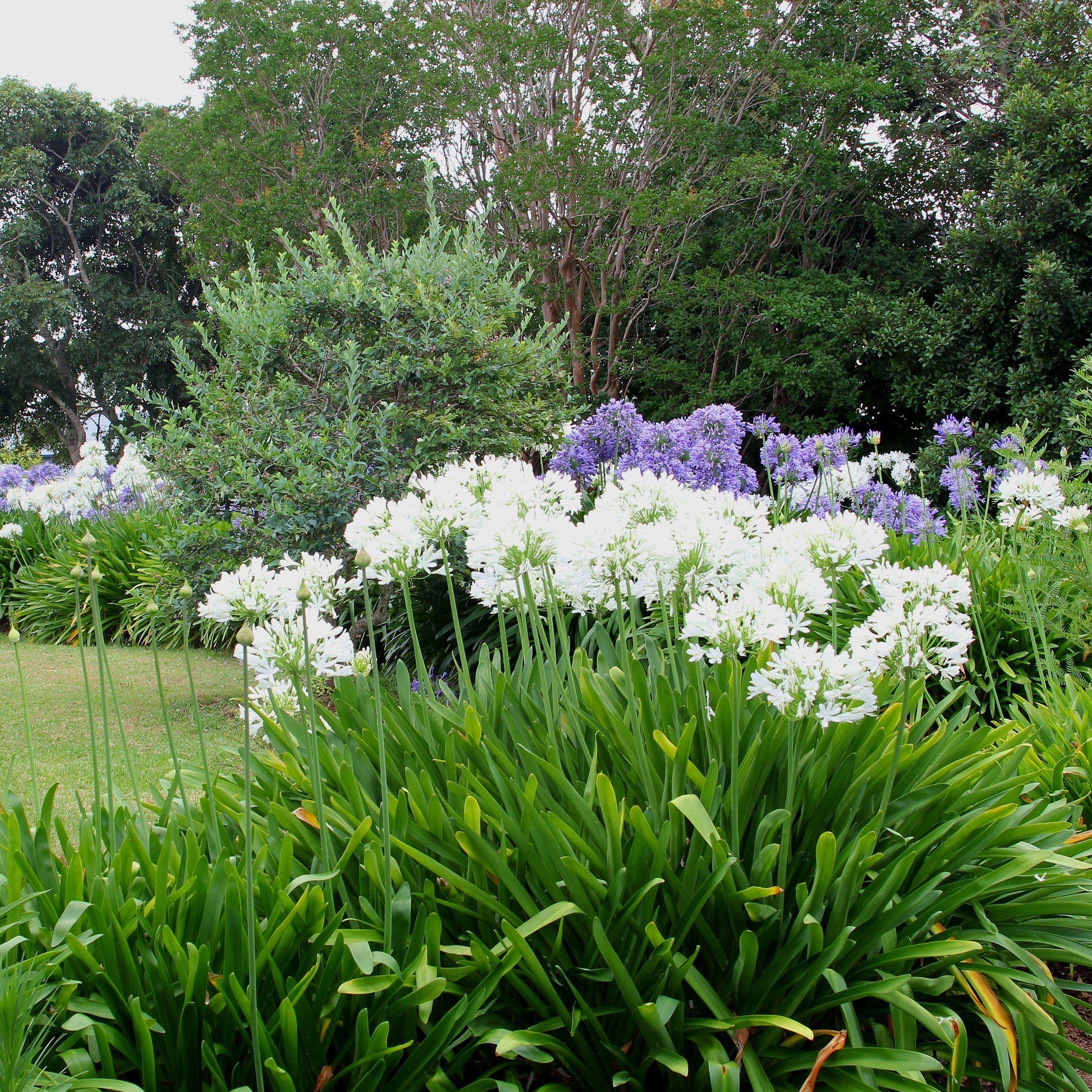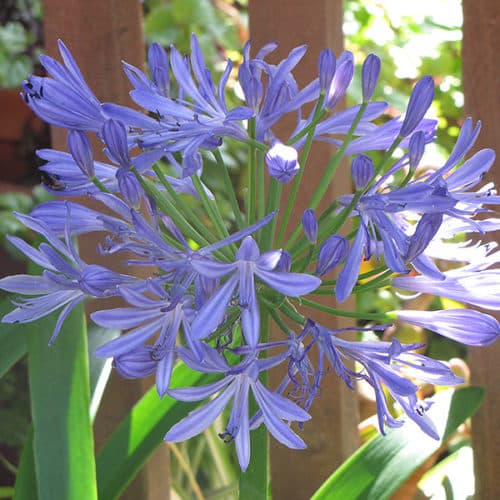Agapanthus Growing Conditions: Dirt, Sunlight, and Watering
Agapanthus Growing Conditions: Dirt, Sunlight, and Watering
Blog Article
Letting Loose the Secret to Effective Agapanthus Growing: Idea for a Flourishing Yard
In the world of gardening, cultivating agapanthus effectively requires a critical strategy that encompasses different facets of plant care. By comprehending the subtleties of agapanthus growing, one can produce an atmosphere where these plants grow and flower generously.
Growing Agapanthus: Ideal Practices
When growing Agapanthus, correct soil prep work is important for making sure successful development and growth of these stunning blossoms. Agapanthus, generally understood as Lily of the Nile or African lily, thrives in well-draining soil with a slightly acidic to neutral pH degree - Agapanthus. Prior to planting, it is critical to modify hefty clay soils with raw material such as compost or peat moss to enhance drain and offer essential nutrients for the plants
To grow Agapanthus, select a location that obtains complete sunshine to partial color, as this will certainly promote healthy growth and bountiful flowering. Dig a hole twice the size of the plant's root ball and position the Agapanthus at the very same deepness it was previously expanding. Carefully backfill the hole with soil, pressing down securely to eliminate any type of air pockets around the origins.
Water the newly planted Agapanthus extensively and proceed to maintain the soil evenly wet, particularly during the plant's energetic expanding season. Agapanthus. Applying a balanced plant food once a month can further sustain the plant's development and blooming. By following these ideal methods for planting Agapanthus, you can produce a stunning screen of these captivating blossoms in your garden
Ideal Soil Conditions for Agapanthus
For ideal growth and blooming success of Agapanthus plants, making certain the soil conditions are suitable is crucial. Agapanthus thrives in well-draining soil with a somewhat acidic to neutral pH degree ranging from 6.0 to 7.0. This type of soil enables sufficient water drainage, avoiding waterlogging which can lead to root rot. To boost soil drainage, consider adding raw material such as garden compost or peat moss when preparing the growing site. Moreover, Agapanthus chooses soil that is abundant in nutrients, so integrating a well balanced plant food during the growing period can promote healthy and balanced growth and vibrant blossoms.

Watering and Feeding Tips
To ensure healthy and balanced growth and dynamic blossoms, proper watering and feeding techniques are necessary for successful Agapanthus growing. Agapanthus plants profit from normal watering, especially throughout the growing period.
When it concerns feeding Agapanthus, a balanced fertilizer with equal parts nitrogen, phosphorus, and potassium can be applied in the spring to advertise healthy and balanced growth and flowering. Slow-release fertilizers are excellent for providing nutrients progressively over an extended duration. Prevent over-fertilizing, as this can cause excessive vegetation development at the expense of blooms.
In addition, including raw material like garden compost into the soil can improve nutrient degrees and improve dirt Extra resources structure, helping in the total health of the Agapanthus plants. By following these watering and fertilizing ideas, gardeners can guarantee their Agapanthus plants grow and generate spectacular display screens of blossoms.
Trimming and Deadheading Techniques
Appropriate trimming and deadheading methods play a crucial duty in maintaining the wellness and appearances of Agapanthus plants, enhancing the necessary methods of watering and fertilizing for effective growing. Trimming Agapanthus entails removing invested blossom heads, dead or yellowing fallen leaves, and overall shaping of the plant to promote much better growth. Deadheading, the procedure of getting rid of faded flowers, not just boosts the plant's appearance but additionally urges additional blooming.
When deadheading Agapanthus, it is a good idea to clip off the blossom stem at the base making use of sharp, tidy shears. This procedure reroutes the plant's energy from seed manufacturing back into root and foliage development, advertising a much healthier and extra robust plant. Routine deadheading can expand the blooming duration of Agapanthus and protect against self-seeding, which can result in congestion.
In regards to trimming, Agapanthus typically advantages from a light trim after flowering to clean up the plant and encourage fresh growth. Cutting back the spent flower stems and removing any kind of broken or dead foliage aids preserve the plant's vitality and overall look. Nonetheless, it is vital to prevent cutting into the crown of the plant, as this can damage its wellness.

Protecting Agapanthus From Pests and Diseases
Carrying out reliable bug and illness administration strategies is look at this website vital to protecting the health and vigor of Agapanthus plants in growing. Agapanthus are typically hardy plants, however they can still drop target to various pests and conditions if not appropriately taken care of. One typical parasite that affects Agapanthus is the Agapanthus borer, a caterpillar that passages into the plant, creating damages to the fallen leaves and blossoms. To avoid invasions, routine assessment of the plants is crucial. If borers are identified, they can be by hand removed, or insecticidal soap can be utilized as a control step.
In enhancement to insects, Agapanthus are at risk to diseases such as origin rot and fungal leaf areas. By staying cautious and resolving bug and disease issues immediately, garden enthusiasts can help their Agapanthus thrive and prosper.

Verdict
Finally, effective growing of agapanthus needs appropriate growing techniques, excellent dirt problems, sufficient watering and feeding, normal pruning and deadheading, and protection from pests and diseases. By following these tricks and tips, gardeners can make sure a prospering garden full of beautiful agapanthus flowers. Agapanthus. Remember to maintain regular treatment and attention to information to advertise the health and longevity of these spectacular plants
When growing Agapanthus, proper dirt preparation is necessary for making certain successful development and advancement of these gorgeous flowers.Water the recently grown Agapanthus completely and continue to keep the soil uniformly moist, particularly during the plant's energetic growing season.For optimum growth and growing success of Agapanthus plants, making certain the soil conditions are excellent is vital. When planting or transplanting Agapanthus, make certain the soil is well-prepared to supply the required structure for the plants to establish themselves effectively. One typical insect that impacts Your Domain Name Agapanthus is the Agapanthus borer, a caterpillar that tunnels into the plant, triggering damages to the leaves and flowers.
Report this page